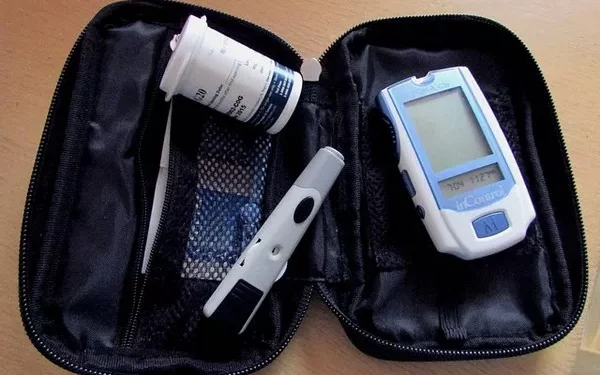The accessibility and affordability of insulin across Europe highlight a significant challenge within the complex framework of diabetes management, which poses threats to the continent’s diverse healthcare systems. These issues are exacerbated by socioeconomic and regional disparities, alongside the imperative for innovative solutions.
This report is part of a larger investigation into the future of diabetes care in Europe.
Recent developments, such as Italy’s newly implemented universal screening program for Type 1 diabetes (T1D), signal progress towards affordable diabetes management. However, the European Union remains far from achieving a harmonized healthcare approach, as the learning curve for implementing effective strategies is both steep and slow.
Failure to act swiftly may lead to an overwhelming burden on Europe’s healthcare infrastructure, threatening both health outcomes and economic competitiveness. A healthy workforce is crucial for driving innovation, and rising health costs risk undermining this goal.
According to Eurostat, the prevalence of diabetes in the EU is on the rise, with approximately 31.6 million individuals affected in 2023—a number expected to increase to 33.2 million by 2030. This growth is attributed to aging populations, increasing obesity rates, and lifestyle shifts.
European nations are adopting various strategies to enhance diabetes care, emphasizing education, integrated care models, and technological advancements.
Countries like Germany and the Netherlands have implemented structured diabetes education programs aimed at empowering patients with essential self-management skills. For example, Germany’s Diabetes Information Service provides valuable resources, while the Netherlands employs multidisciplinary teams to deliver holistic care, resulting in improved health outcomes and reduced hospital admissions.
Digital health innovations, such as continuous glucose monitoring (CGM) and telemedicine, are transforming diabetes care in nations like Sweden and Denmark. These tools facilitate real-time health monitoring and personalized treatment adjustments, significantly enhancing patient outcomes.
National Disparities in Diabetes Treatment
Despite these advancements, stark inequalities persist in diabetes treatment throughout the EU. A report from the European Diabetes Forum reveals that individuals in economically disadvantaged areas and from ethnic minority backgrounds face significant barriers to accessing quality care.
Chantal Mathieu, President of the European Association for the Study of Diabetes, emphasized the urgent need to tackle systemic issues contributing to these disparities, particularly socioeconomic factors and healthcare accessibility.
In Italy, the regional differences in diabetes care are stark. Northern regions benefit from superior healthcare infrastructure, offering more comprehensive services compared to the south. This discrepancy is evident in the varying rates of diabetes-related complications and mortality across the nation.
Access to Screening and Care
The access to diabetes screening and treatment is inconsistent across EU member states. The European Diabetes Forum’s “Blueprint for Action on Diabetes in the European Union by 2030” highlights the necessity for unified policies to bridge these gaps, stating, “People across Europe encounter significant inequalities in access to care, exacerbated by advancements in treatment options and technologies.”
In Eastern Europe, nations like Romania and Bulgaria face challenges with limited access to screening programs and essential diabetes medications due to economic constraints and inadequate healthcare funding. In contrast, Western European countries, including Germany and France, have established robust healthcare systems that provide comprehensive screening and early intervention services.
Italy’s Universal T1D Screening Initiative
Italy has recently made strides with its universal T1D screening program for children, approved by the Italian Senate in September 2024. This initiative aims to enable early detection of T1D, preventing severe complications such as diabetic ketoacidosis. The law mandates screening for children aged 1 to 17, utilizing advanced diagnostic tools to identify those at risk.
Dr. Maria Rossi, a leading endocrinologist, noted, “This initiative represents a significant milestone in pediatric diabetes care. Early detection will not only save lives but also alleviate long-term burdens on the healthcare system.” The program also includes establishing a National Observatory on Type 1 Diabetes to collect data aimed at improving disease management, complemented by awareness campaigns funded by the Ministry of Health.
Persistent Insulin Affordability Issues
Access to affordable insulin remains a pressing concern in several EU countries. While nations like Germany and the Netherlands ensure insulin availability through robust healthcare systems, Eastern European countries continue to struggle. A recent report from the World Health Organization (WHO) underscores that high insulin prices and limited availability are significant obstacles to effective diabetes management in these regions.
Emer Cooke, WHO’s Director of Regulation of Medicines, stated, “The growing prevalence of diabetes coincides with insufficient insulin supply and exorbitant prices. Immediate action is imperative.” Efforts such as the WHO’s insulin prequalification program aim to diversify production and reduce prices through enhanced competition, yet coordinated EU-level initiatives are essential for ensuring access to affordable insulin for all patients.
The United States: A Comparative Perspective
The United States provides a contrasting example in diabetes management, particularly in addressing treatment inequalities. The U.S. has adopted various patient-centered approaches aimed at improving diabetes care and addressing social determinants of health.
The Patient-Centered Medical Homes (PCMH) model promotes coordinated care through primary care providers, with evidence indicating that it improves health outcomes and reduces disparities. Additionally, community health workers (CHWs) play a vital role in connecting underserved communities to healthcare resources, enhancing diabetes management among marginalized populations.
Innovations in Diabetes Care
In terms of technological advancements, the U.S. has seen significant progress in diabetes care, particularly with the adoption of CGM systems and insulin pumps, which improve glycemic control and minimize complications.
Dr. Anne Peters, a prominent diabetes specialist, emphasized the need to address implicit bias within medical care to ensure equitable treatment for all patients, regardless of their background. Furthermore, Dr. Jennifer Raymond highlighted the importance of policies promoting access to advanced diabetes treatments. “We must ensure that innovations in diabetes care are accessible to everyone, not just those who can afford them,” she stated.
The European Diabetes Forum (EUDF) has advocated for addressing diabetes inequalities across the EU. In a recent statement, the EUDF stressed the importance of leveraging technology to bridge care gaps. “Consideration should also be given to the use of technology, addressing inequalities in diabetes care and ensuring that psychosocial as well as metabolic health outcomes are addressed,” the forum noted.
Ireland’s Modernized Monitoring Approach
In May, Ireland’s Minister for Health, Stephen Donnelly, remarked, “We have seen significant technological advances in diabetes management. More than 20,000 adults in Ireland live with type 1 diabetes, and it is encouraging to see our national clinical guidelines align with the best available evidence for monitoring blood glucose levels.”
Donnelly made these comments at the launch of updated guidelines for adults with Type 1 Diabetes from the National Clinical Effectiveness Committee (NCEC), aimed at enhancing the access, quality, and safety of care for individuals with the condition. The Irish Health Service Executive (HSE) also introduced an updated Integrated Model of Care for individuals with Type 2 Diabetes Mellitus, which recommends making continuous glucose monitoring available for all adults with Type 1 Diabetes.
To foster a robust economy and enhance global competitiveness, Europe must invest in technology and education, as seen in Ireland’s efforts, to ensure effective and comprehensive diabetes management from early childhood through ongoing care. Failing to take decisive action risks further weakening the continent’s social care systems.
This is a critical moment for European governments to seize the opportunity to improve diabetes care for all.
Related topics:
Low-Carb Diet May Help Type 2 Diabetes Patients Discontinue Medication, Research Reveals
Early Onset Type 2 Diabetes Nearly Quadruples Mortality Risk
Understanding the Link Between Diabetes and Pancreatic Cancer



























